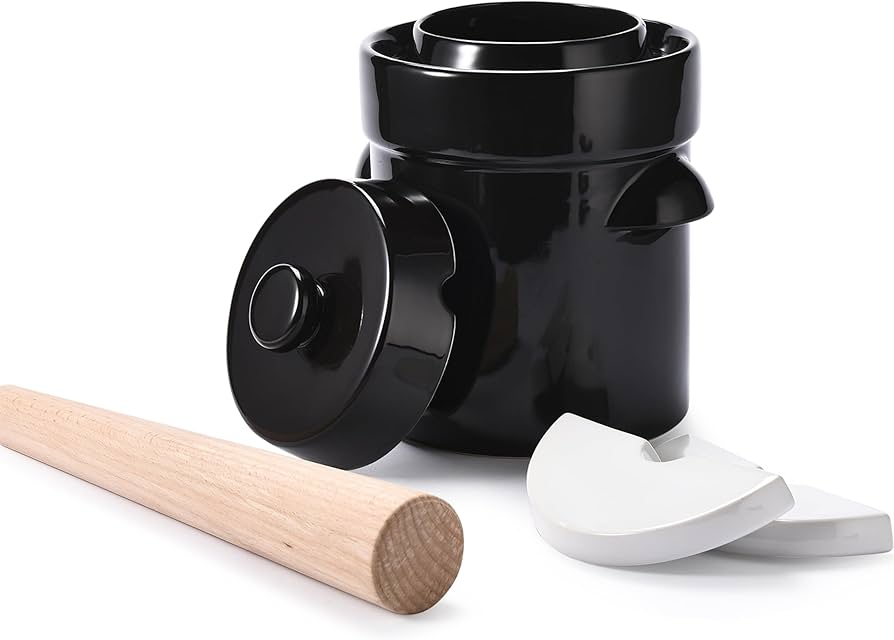Fermentation enhances food flavor, texture, and nutrition, with sauerkraut and kimchi being prime examples. Sauerkraut, made from fermented cabbage, is low in calories yet rich in vitamins C and K2, as well as dietary fiber, making it ideal for weight management. It can be used in salads, toppings, and hearty soups. Kimchi, a Korean dish of fermented napa cabbage and spices, is also low-calorie and packed with vitamins A, B, and C, along with antioxidants. It can elevate stir-fries, fried rice, and tacos. Incorporating these fermented foods provides health benefits and enriches culinary creativity while preserving cultural legacies.
Fermentation Fundamentals: Using Sauerkraut and Kimchi in Cooking
Fermentation is an ancient preservation technique that not only extends the shelf life of foods but also enhances their flavor, texture, and nutritional value. Among the myriad of fermented foods available, sauerkraut and kimchi stand out for their distinct tastes and health benefits. In this article, we will delve into the fundamentals of fermentation, explore the nutritional value of sauerkraut and kimchi, and discover how to effectively incorporate these vibrant ingredients into your cooking.
Understanding Fermentation
At its core, fermentation involves the conversion of sugars and carbohydrates into acids, gases, or alcohol, usually facilitated by microorganisms such as bacteria, yeasts, or molds. This biochemical transformation not only preserves food but also creates complex flavors and textures. The two most common types of fermentation relevant to sauerkraut and kimchi are lactic acid fermentation and alcoholic fermentation.
Lactic Acid Fermentation
Both sauerkraut and kimchi rely on lactic acid fermentation, where lactic acid bacteria (LAB) convert sugars primarily from vegetables into lactic acid. This acid acts as a natural preservative, giving fermented foods their characteristic tangy flavor while inhibiting the growth of harmful bacteria.
The Role of Probiotics
Fermented foods like sauerkraut and kimchi are rich in probiotics, which are beneficial bacteria that support gut health. These probiotics can enhance digestion, bolster the immune system, and may even contribute to mental well-being by influencing gut-brain communication.
A Look at Sauerkraut
Nutritional Value of Sauerkraut
Sauerkraut, a fermented cabbage dish, is a staple in many cultures, particularly in Germany. Its preparation involves finely shredding fresh cabbage and mixing it with salt, which draws out water from the cabbage, creating a brine that encourages fermentation.
- Low in Calories, High in Nutrients: Sauerkraut is incredibly low in calories, with roughly 27 calories per 100 grams. It is primarily composed of water and fiber, making it a valuable addition to weight management diets.
- Rich in Vitamins: This tangy dish is an excellent source of Vitamin C, important for immune function and skin health. It also provides Vitamin K2, which plays a vital role in bone health and may help regulate calcium in the body.
- High in Fiber: Sauerkraut is high in dietary fiber, which aids in digestion, helps maintain healthy blood sugar levels, and promotes a feeling of fullness.
Incorporating Sauerkraut into Your Cooking
Sauerkraut can add both vibrant flavor and tanginess to a variety of dishes. Here are some creative ways to incorporate it into your meals:
- Toppings: Use sauerkraut as a topping for burgers, hot dogs, or sandwiches to add a zesty crunch.
- Salads: Toss sauerkraut into salads for an unexpected twist. It pairs well with leafy greens, cucumbers, and creamy dressings.
- Stuffed Dishes: Incorporate sauerkraut into stuffed cabbage rolls or pierogis for a traditional European flair.
- Soups and Stews: Add sauerkraut to soups or stews for depth and complexity, particularly in hearty dishes like borscht or German-style potato soup.
Exploring Kimchi
Nutritional Value of Kimchi
Kimchi, a Korean delicacy, is traditionally made from fermented napa cabbage, radishes, and other vegetables mixed with various seasonings, including chili pepper, garlic, ginger, and fish sauce. The specific ingredients can vary widely, resulting in a range of flavors and textures.
- Nutrient-Dense: Kimchi is low in calories, typically around 15 calories per 100 grams, while being loaded with vitamins A, B, and C.
- Probiotics: Like sauerkraut, kimchi is rich in probiotics, thanks to its fermentation process, making it beneficial for gut health.
- Rich in Antioxidants: Many of the ingredients used in kimchi, particularly garlic and chili peppers, are high in antioxidants, which can help combat oxidative stress and inflammation in the body.
Incorporating Kimchi into Your Cooking
Kimchi’s bold flavors can elevate many dishes. Here are some exciting ways to use this versatile fermented food:
- Stir-fries: Stir-fry kimchi with vegetables and proteins like tofu, chicken, or beef for a quick, flavorful dish.
- Fried Rice: Add chopped kimchi to fried rice for a spicy kick and a probiotic boost.
- Soups: Kimchi can be used to make a delightful kimchi jjigae (kimchi stew), a comforting Korean classic loaded with flavor.
- Tacos: Try kimchi as a topping for tacos, providing an exciting twist to traditional flavors with a spicy, tangy kick.
Final Thoughts
Incorporating fermented foods like sauerkraut and kimchi into your diet offers numerous health benefits along with an explosion of flavors. Both ingredients are easy to prepare, delicious, and loaded with nutrients, making them perfect for enhancing your culinary repertoire. Whether you enjoy them on their own or integrated into various dishes, embracing these fermented treasures can support your health and inspire creativity in the kitchen.
As you explore the world of fermentation and its culinary delights, remember the joy of preserving not just food but also cultural traditions that have stood the test of time!
